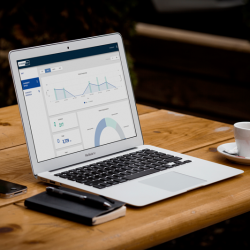 The debate around designing a workplace that works for millennials and now Gen Z is a public one. Every week a new article highlights what is required to create a workplace that millennials want. However for large companies with a diverse workforce, more than the desires of just one generation must be considered to make the workforce effective. Is it possible to create a universal workforce that can work across generations to serve the needs of all employees, and should that be the goal for workplace design? Right now, we know that tech firms are drawing more top talent than they did before. It can be seen in the a comparison of Harvard MBAs in 2007 and again in 2014 that went into banking (13 percent down to 5 percent) vs tech (up from 7 percent to 17 percent). Following their lead, broader design has shifted to adopt a tech feel in their own offices, with open layouts trending upwards. Office amenities from ping pong tables to slides are also rising as companies try to bring a fresh approach to the workplace.
The debate around designing a workplace that works for millennials and now Gen Z is a public one. Every week a new article highlights what is required to create a workplace that millennials want. However for large companies with a diverse workforce, more than the desires of just one generation must be considered to make the workforce effective. Is it possible to create a universal workforce that can work across generations to serve the needs of all employees, and should that be the goal for workplace design? Right now, we know that tech firms are drawing more top talent than they did before. It can be seen in the a comparison of Harvard MBAs in 2007 and again in 2014 that went into banking (13 percent down to 5 percent) vs tech (up from 7 percent to 17 percent). Following their lead, broader design has shifted to adopt a tech feel in their own offices, with open layouts trending upwards. Office amenities from ping pong tables to slides are also rising as companies try to bring a fresh approach to the workplace.
Yet it is now becoming clear and clearer that these designs don’t necessarily work for everyone. For those that have to give up an office or change the way they have worked their entire life, the knowledge that millennials appreciate the more open layout is little solace. In fact designing a start-up style space may not even work within generations themselves. Susan Cain, author of a book on the Power of Introverts even collaborated on a collection with Steelcase for more privacy in the modern office.
All for one or one for all
There is a saying that trying to please everyone often results in pleasing no one. Design often does follow trends but works to meet the needs of individuals. However, recently the impetus to drive down real estate costs has fit well with the shift to open layouts through the elimination of larger private offices. Now workplaces are looking to create spaces that work for all employees in a space with multiple meeting rooms, breakout spaces and more. Through a variety of work styles within one location, and abundant choice of work settings, the idea is that employees will be able to choose what works best for them.
Some organizations have taken the specialized approach. Firms that have been traditionally more conservative like banks and insurance companies are branching out to create digital hubs for innovation. These separate spaces are designed with a start-up like feel and vibe that suit a younger and more casual workforce. The layouts also support the rapid, sprint type of workflows that require rapid prototyping and iterations of production from research to launch. Capital One and Aviva are examples of firms that have adopted this approach to success. As a result Capital One increased the size of “The Garage”, their innovation space, by 4 times last year. Yet these prototype spaces would likely fall flat in the traditional offices of the organizations mentioned above.
The right approach
The idea of a universal space to meet the requirements of many generations is a flawed idea. Due to limited space, tradeoffs are inherent in new office designs. While more amenities are often appreciated, that extra space often comes from downsizing personal workstations or offices.
There is no universally accepted workplace. What works for any organization depends on their specific goals, line of business and company culture. While organizations in the past seem to be lining up to copy the tech approach, it is one centred on driving internal collaboration and breaking down barriers to ramp up projects faster. For a service firm working with clients, the type of collaboration required will be different.
Another example comes from a Workplace Design Event hosted by North America’s Bisnow. Scott Watson, Partner of Crown Realty Partners noted that he’s seen one space when a fully equipped bar went unused because employees just weren’t used to the concept of drinking while at work. In an operating environment where every square foot counts, failing to account for your company culture in this scenario is a large misstep.
But what all workplaces can benefit from is design that better meets basic human physiological needs. Natural light for example is something that is now becoming universally accepted as a design requirement. As is the need to give employees some degree of choice in where they work. Technological considerations should also focus on the user experience and opt for intuitive interfaces that work for all. Acoustic controls are another big one, as studies show noise in more open layouts is a distraction.
While there are differences among generations in the workplace, what Millennials, Gen Z and Boomers can all appreciate it a healthier workplace, more natural light and intuitive design. Where differences should be accentuated is when it comes to supporting a company culture and business unit operations.
_______________________
 Kyle Pinto is Head of Community at Chargespot
Kyle Pinto is Head of Community at Chargespot














January 17, 2017
The very idea of a universal workplace is seriously flawed 0
by Kyle Pinto • Comment, Flexible working, Technology, Workplace design
Yet it is now becoming clear and clearer that these designs don’t necessarily work for everyone. For those that have to give up an office or change the way they have worked their entire life, the knowledge that millennials appreciate the more open layout is little solace. In fact designing a start-up style space may not even work within generations themselves. Susan Cain, author of a book on the Power of Introverts even collaborated on a collection with Steelcase for more privacy in the modern office.
All for one or one for all
There is a saying that trying to please everyone often results in pleasing no one. Design often does follow trends but works to meet the needs of individuals. However, recently the impetus to drive down real estate costs has fit well with the shift to open layouts through the elimination of larger private offices. Now workplaces are looking to create spaces that work for all employees in a space with multiple meeting rooms, breakout spaces and more. Through a variety of work styles within one location, and abundant choice of work settings, the idea is that employees will be able to choose what works best for them.
Some organizations have taken the specialized approach. Firms that have been traditionally more conservative like banks and insurance companies are branching out to create digital hubs for innovation. These separate spaces are designed with a start-up like feel and vibe that suit a younger and more casual workforce. The layouts also support the rapid, sprint type of workflows that require rapid prototyping and iterations of production from research to launch. Capital One and Aviva are examples of firms that have adopted this approach to success. As a result Capital One increased the size of “The Garage”, their innovation space, by 4 times last year. Yet these prototype spaces would likely fall flat in the traditional offices of the organizations mentioned above.
The right approach
The idea of a universal space to meet the requirements of many generations is a flawed idea. Due to limited space, tradeoffs are inherent in new office designs. While more amenities are often appreciated, that extra space often comes from downsizing personal workstations or offices.
There is no universally accepted workplace. What works for any organization depends on their specific goals, line of business and company culture. While organizations in the past seem to be lining up to copy the tech approach, it is one centred on driving internal collaboration and breaking down barriers to ramp up projects faster. For a service firm working with clients, the type of collaboration required will be different.
Another example comes from a Workplace Design Event hosted by North America’s Bisnow. Scott Watson, Partner of Crown Realty Partners noted that he’s seen one space when a fully equipped bar went unused because employees just weren’t used to the concept of drinking while at work. In an operating environment where every square foot counts, failing to account for your company culture in this scenario is a large misstep.
But what all workplaces can benefit from is design that better meets basic human physiological needs. Natural light for example is something that is now becoming universally accepted as a design requirement. As is the need to give employees some degree of choice in where they work. Technological considerations should also focus on the user experience and opt for intuitive interfaces that work for all. Acoustic controls are another big one, as studies show noise in more open layouts is a distraction.
While there are differences among generations in the workplace, what Millennials, Gen Z and Boomers can all appreciate it a healthier workplace, more natural light and intuitive design. Where differences should be accentuated is when it comes to supporting a company culture and business unit operations.
_______________________